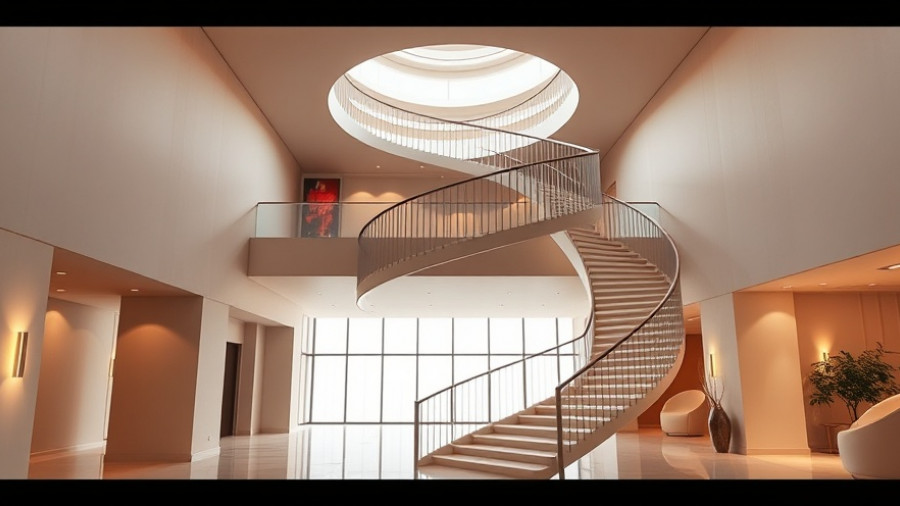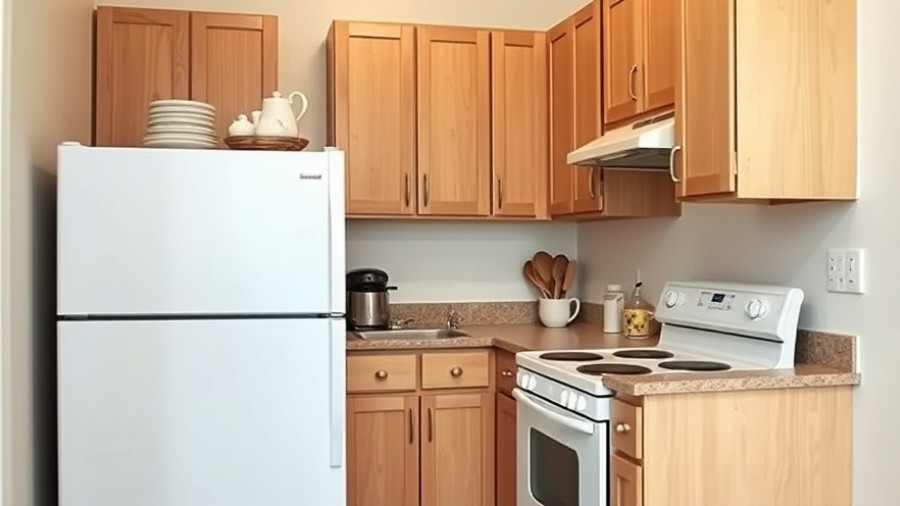
Finding the Perfect Walls: Understanding Barely-There Paint Colors
As designers and architects increasingly gravitate towards understated aesthetics, the influence of barely-there hues has become a core consideration in home decor. Unlike bold statements that demand attention, these washed-out shades create a serene backdrop, offering warmth and subtlety, while also playing a critical role in shaping the overall ambiance of a space. In this exploration, we delve into the appeal, benefits, and best practices of using minimalistic colors in home settings.
Why Subtlety Matters in Home Design
Aesthetic subtlety is particularly valuable in homes designed for comfort and relaxation. Colors that lean towards white, grey, or muted pastels can foster a tranquil atmosphere, improving mental wellness. Consider the ideal shades identified by leading architects in various projects; their insights reflect the impact of these colors on achieving a harmonious design. For instance, Ronan Le Grand and Konrad Steffensen of Corpus Studio suggest a warm, creamy yellow-white like Pointing from Farrow & Ball. They advocate a soft palette that can infuse life into a room without overwhelming the senses.
Architect-Approved Barely-There Colors
When it comes to choosing a minimalistic palette, architects often recommend versatile shades based on their practical application in a variety of settings. Anki Linde from LSL Architects emphasizes the importance of the color placement in alignment with the room's function. Sable Gris, a pale grey with pink undertones from Argile, demonstrates how nuanced colors can elevate the comfort level by interacting positively with natural light and human complexion.
Designing Spaces Usefully: Practical Applications of Soft Colors
The beauty of these subtle shades stems from their adaptability. They can transform spaces designed for relaxation, work, or socializing. The use of Farrow & Ball's Elephant’s Breath illustrates this point effectively; it can shift in tone based on the intensity of natural light, offering a unique aesthetic experience throughout the day. As observed by architects Leah Korzeczek and Matthias Hiller, the color's versatility shines in environments where light plays a critical role in setting the mood.
Color in Context: The Emotional Appeal of Soft Hues
Choosing a barely-there color goes beyond aesthetics—there are psychological benefits as well. Soft colors have long been associated with calmness and tranquility, making them ideal for bedrooms and living areas. Colors like Benjamin Moore’s Nimbus, which is frequently chosen by designers, effortlessly work with natural light, shifting slightly to complement the daily changes in mood that sunlight brings. Understanding how these colors affect our emotions can lead to better design decisions and improve living conditions.
Tips for Choosing the Right Shade for Your Home
When selecting your preferred barely-there color, consider the following tips: 1. **Lighting Conditions**: Observe how light interacts with paint swatches at different times of the day. A color that looks good in the store may appear drastically different at home. 2. **Room Function**: Different areas of the house serve varying purposes. Choose warm colors for spaces designed for relaxation, while cool tones may be more suitable for home offices or areas requiring focus. 3. **Complementing Decor**: Consider the existing furniture and fixtures in the room. Choose colors that can either harmonize with or create balance against your decor.
Inspiring Spaces: Successful Applications of Barely-There Colors
Architects frequently conceptualize their designs around specific color narratives. For instance, the application of Dulux DH Linen Color in Jill McNair's Peckham home adeptly showcases how a yellow-tinted white can add a warm glow to living areas. The meticulous selection of paint can affect how spaces are perceived and experienced, leading to unique living environments that resonate with their inhabitants.
Debunking Myths: Common Misconceptions About Subdued Palettes
Despite the popularity of virtual design platforms, common misconceptions still cloud the understanding of minimalistic colors. One prevalent myth is that neutral or subdued shades lead to boring interiors. On the contrary, when balanced with varied textures and strategic accents, these hues can produce sophisticated and intriguing atmospheres. Vanessa Redgrave, a noted interior designer emphasizes that the true magic lies in the layering of textures, materials, and colors to craft a rich visual narrative.
Takeaway: The Future of Color Trends in Home Design
As we progress deeper into the customization of spaces, the role of barely-there colors is expected to expand. With demand for wellness-driven design, these soft palettes represent a bridge towards emotional comfort in housing. Homeowners and contractors alike should pay attention to how introducing or promoting such colors can foster happier and healthier living environments.
The journey of designing with subtlety requires an understanding of both trends and emotional responses. Whether working on a new project or refreshing a room, the deliberate use of these nuanced shades can help craft inviting and tranquil spaces.
 Add Row
Add Row  Add
Add 




Write A Comment